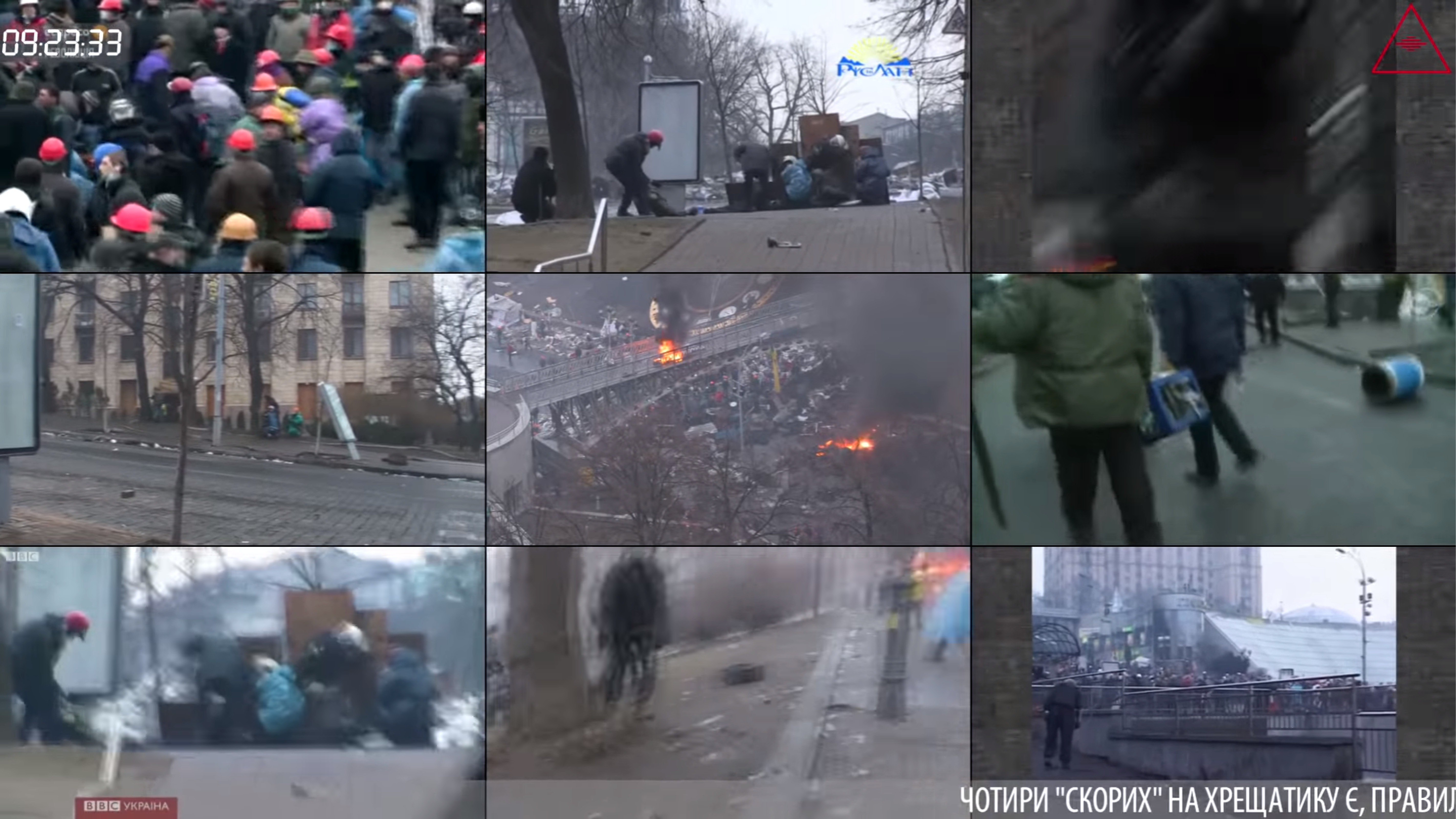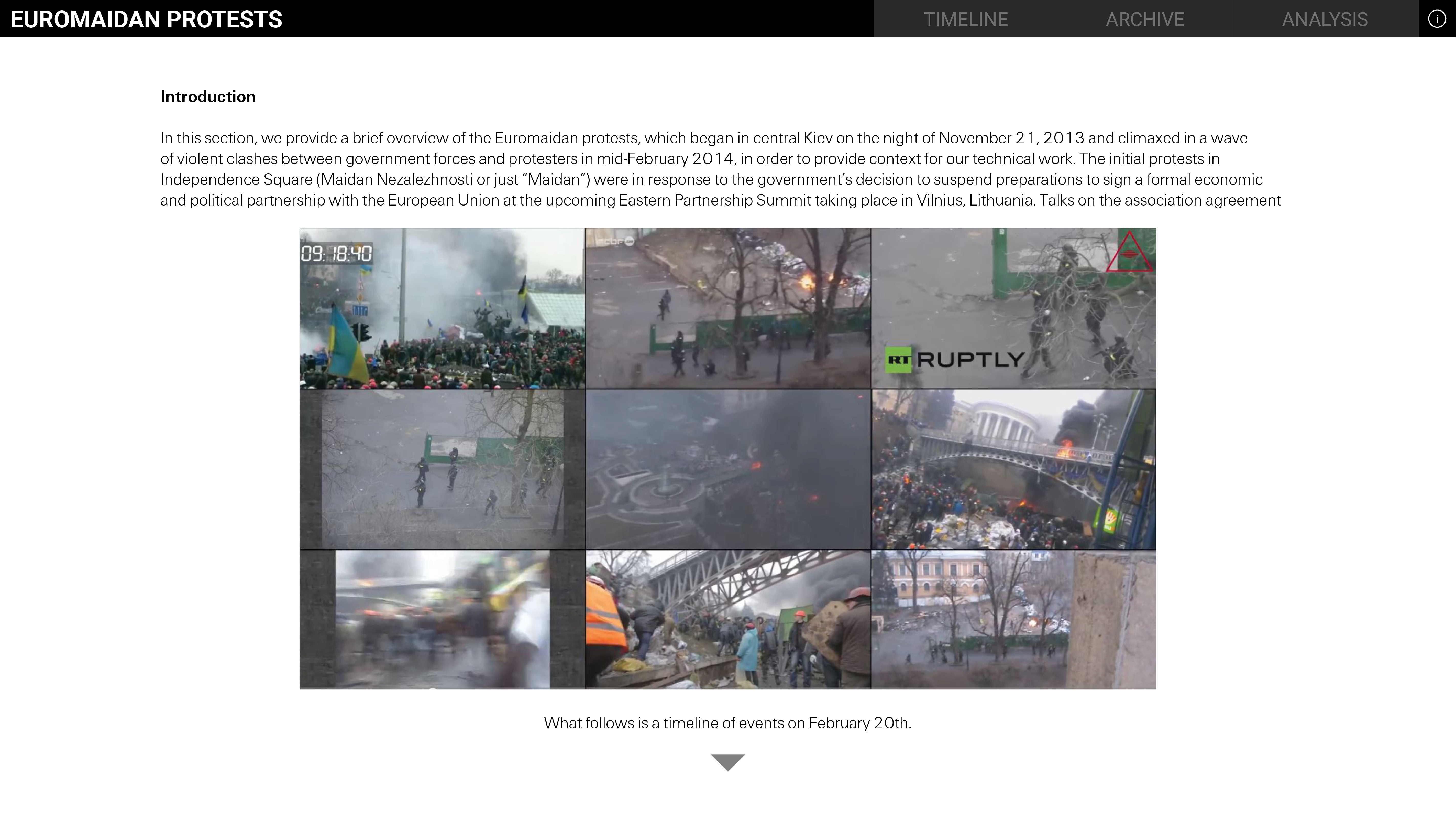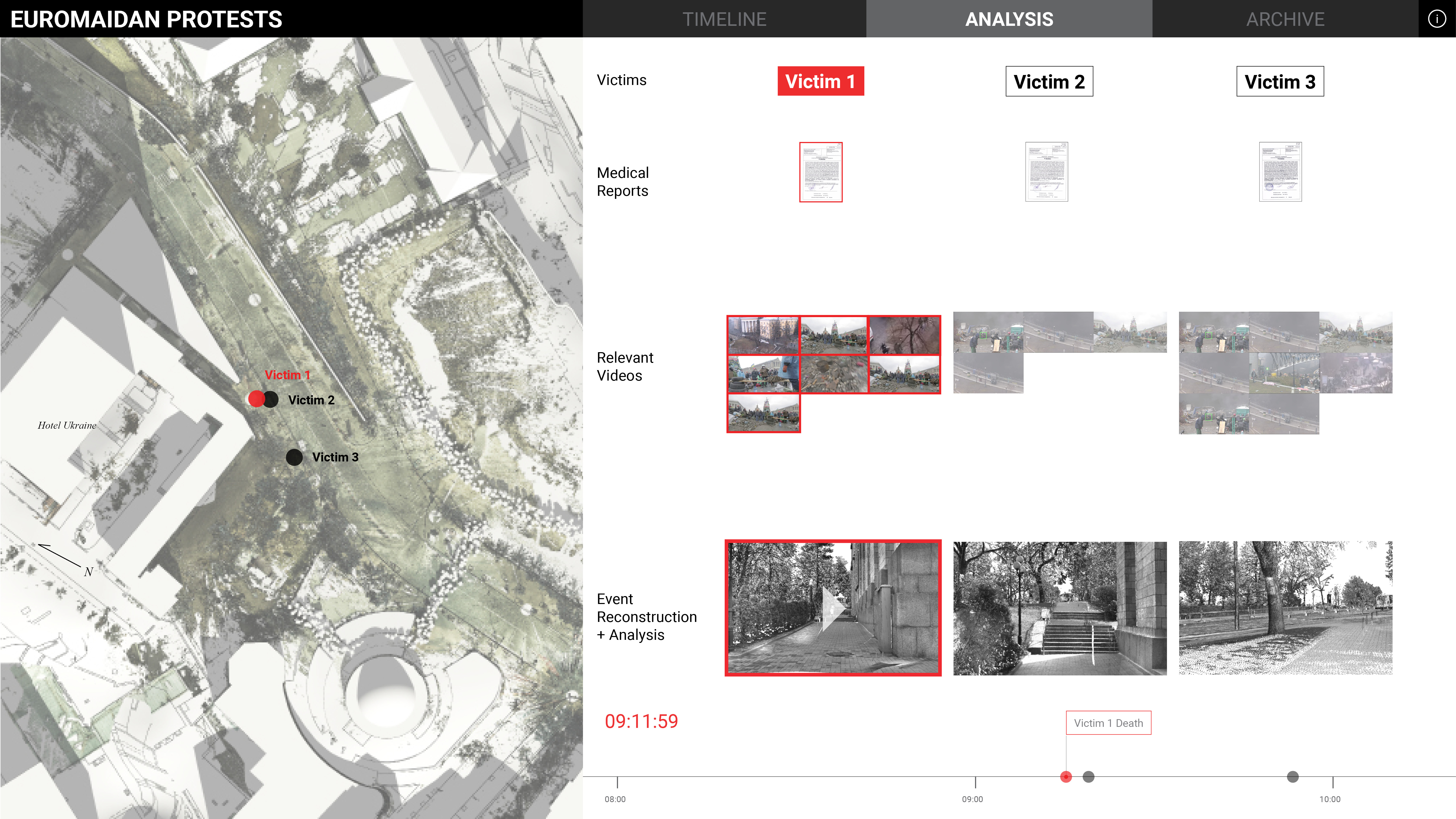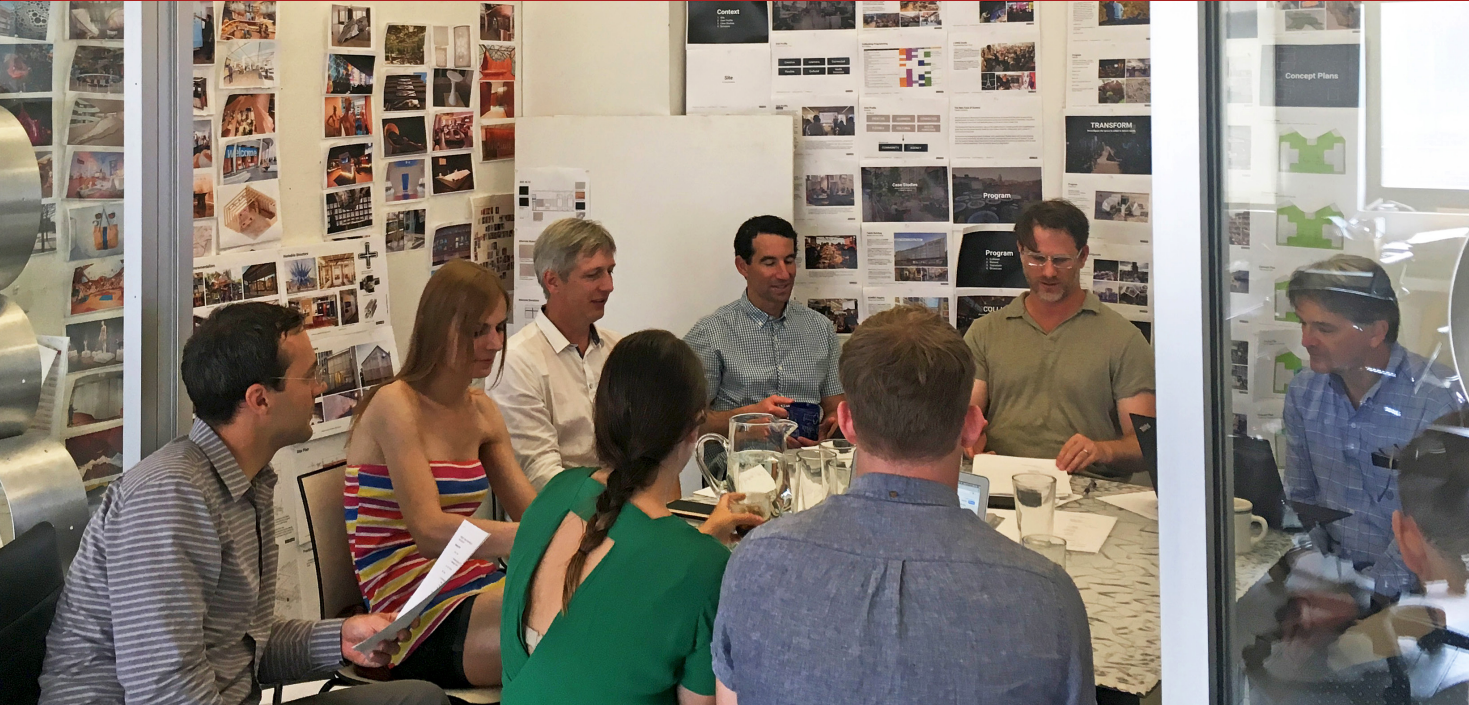Event Reconstruction for Euromaidan
In the summer of 2015, a conference at the Center of Human Rights Science brought together a partnership between research centers in Pittsburgh, an architecture firm in Brooklyn, Ukrainian political activists, and human rights lawyers.
Pavel Dykan and Alexandra Iatsenko, attorneys who represented families of victims in the 2013-2014 Euromaidan protests, requested our help developing a tool that can be used in court to pursue truth and accountability in the face of the many competing narratives that surface after conflict and human rights violations.
Background
The Euromaidan protests of 2013-2014 culminated in several days of violent clashes in between demonstrators and Ukrainian police and military forces. After nearly four months of sustained occupation of Kiev’s historic Maidan Square by protesters advocating for European Union integration and constitutional reform, police forces sought to clear the square beginning on February 18, 2014. The ensuing standoff two days later on February 20, which resulted in the deaths of 47 civilian protesters and one police officer within the span of four hours, is the focus of our work with Ukrainian human rights lawyers. Lawyers for the victims and state prosecutors allege that many of the killings were unjustified because the protesters posed no direct harm to the officers or the public.
While the events in question unfolded on a few hundred feet of nearby Institutskya Street and over the course of just a few hours, eyewitnesses, journalists and security cameras looked on and documented video fragments of the movements of police and the violence against protesters.

Event Reconstruction
Using this large set of raw video data, CHRS worked together with SITU Research, an architecture and design firm based in New York, to produce an event reconstruction related to the deaths of three protesters in Kiev on February 20, 2014. This reconstruction and analysis is based on nearly 65 hours of video, as well as site surveys (including a 2D plan of Kiev and a 3D point cloud) and autopsy reports.The system and algorithms we developed was able to analyze large amount of video footage to achieve spatial (3D) and temporal (4D) reconstruction of the event and tell the story from many vantage points rather than a single authoritative view.
In addition to conducting this analysis, SITU produced an interactive presentation platform that contains evidentiary assets, the results of our analysis, reconstruction animations and an archive of geolocated and synchronized source videos. It has been submitted to the Kiev District Court as part of the prosecution of several security force personnel now on trial for these killings.
Screenshot of the Introduction section of the platform

Screenshot of the Analysis section of the platform.

The success of this platform lies in its automation of an analysis process that used to be extremely time-consuming, expensive, and emotionally challenging, as well as its ability to integrate video analysis with other forms of evidence in a package that can be viewed and understood by non-specialists. This capacity was only made possible by the collaboration of computer scientists, designers, legal professionals, social scientists, and most importantly, activists with detailed knowledge about the events that occurred and the space in which they took place, to provide spatial and temporal guideposts upon which the reconstruction could take shape.

Future
As visual evidence becomes an increasingly important aspect of journalism, advocacy, and law across the globe, the technology and experience that emerged out of this project have unlimited potential for future applications. Since then, we have applied event reconstruction on events such as the 2013 Boston Marathon bombing and the 2016 Dallas shootings.
While recognizing the value of video data, we also want to emphasize the potential pitfalls: videos can be faked and manipulated, and the use of visual evidence can also be dependent upon one's assumptions and interpretive frameworks. Considering the potential prejudicial effect that images and video might have on legal fact-finders and decision makers, proper use would require contextualization by expertise and testimony.
References
- Jay D. Aronson, McKenna Cole, Alex Hauptmann, Dan Miller, and Bradley Samuels, "Reconstructing Human Rights Violations Using Large Eyewitness Video Collections: The Case of Euromaidan Protester Deaths," Journal of Human Rights Practice, 2018, DOI: https://doi.org/10.1093/jhuman/huy005
- "Who Killed the Kiev Protesters? A 3-D Model Holds the Clues," The New York Times, (Published
- Junwei Liang, Desai Fan, Han Lu, Poyao Huang, Jia Chen, Lu Jiang, and Alexander G. Hauptmann, "Event Reconstruction for Conflict Monitoring in Social Media (Video Demo)" (October 2016)
- Center for Human Rights Science 2017-18 Review [pdf]
- Center for Human Rights Science 2011-16 Review [pdf]
